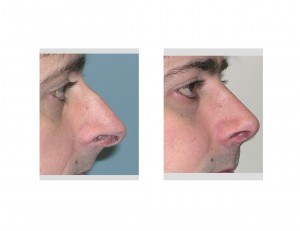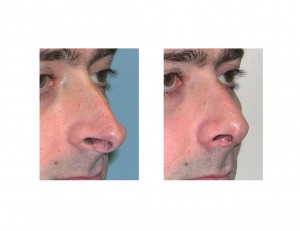Background: The nose has a large number of aesthetic deformities of which the vast number of them either are tip-based or the tip is a part of the overall problem. When a person has complaints about a nose that is too big, that could mean a variety of issues. The nasal tip could be just too thick or wide or the overall nose in every dimension is disproportionately bigger than the other features of the face.
One of the reasons that a nose can appear too big is that it has a long nasal tip. This is a perception that is seen from the side view with the tip sticking out considerably. This is known as an over-projected nasal tip. Tip projection is a rhinoplasty term that describes how much the nose sits in front of the face. Tip projection can be measured and has been quantitated by many parameters using various ratios and angles. Most of the time, however, when the patient says their nose is too long the plastic surgeon uses his/her experience to determine if that is so and should be changed.
The over-projecting nose is the direct result of the underlying cartilaginous support structures. In mild to moderate cases, the excessive tip projection may be the result of long lower alar cartilages with little to no septal overgrowth. in more extreme cases, the major driving force is due to septal overgrowth which makes not only the tip long but affects the bridge and dorsal line as well. (too high)
Case Study: This 35 year-old male was bothered by his big nose. He had a long thin face and his nose was equally thin…but very long. He wanted a nose that was more proportionate to his face, an overall shorter nose. In addition he had very flat cheek bones and recessed infraorbital rims that made his midface flat, contributing to an already long nose.


Case Highlights:
1) The extreme overprojecting nose has a long overgrown septum that has stretched out the lower alar cartilages and created a high dorsal line.
2) An open rhinoplasty is needed to significantly shorten the caudal end of the septum and lower the dorsal line. The height of the septum also needs to be reduced. The upper and lower alar cartilages are adjusted around the new septal shape.
3) Cheek implants may complement the long nose correction through midface volume augmentation
Dr. Barry Eppley
Indianapolis, Indiana



